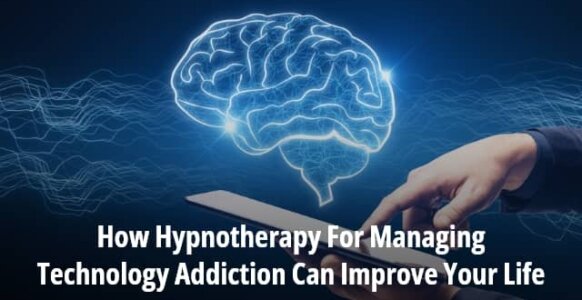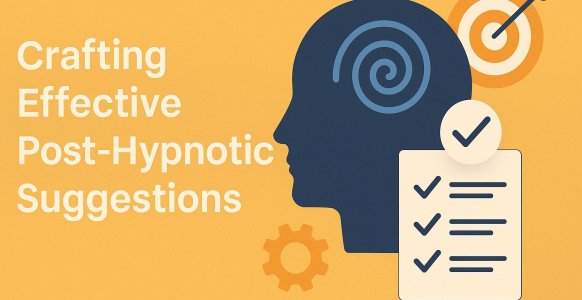
If you look up the word “addiction” online, you’ll find it variously described as something like this:
“A chronic disorder, compulsive in nature, that results in the use of or engagement in substances or activities, despite the potential for harm and damage to the brain.”
You can become addicted to anything from food to gambling to sex. Some of the more common traditional addictions include smoking, alcohol and drugs.
Due to the rise of modern technology, however, particularly with reference to the internet and cell phones, the number of potential addictions has literally taken off.
Hypnotherapy for managing technology addiction can provide one buffer against this growing trend.
Technology addiction comes under the general term of behavior addictions, as opposed to addictions relating to substances.
It can affect people of any age but is especially prevalent in teens and young adults, who feel the need or compulsion to be constantly plugged in.
Part of this need comes from the knowledge that everybody else is doing it and they don’t want to miss out.
Another side of it is the chance to be part of a community, even if that community is virtual and the people never actually meet.
But anyone with a smartphone or internet access can find themselves unable to switch off, regardless of their age.
It’s almost too easy to search for whatever it is you want to find online, whether that’s for information or for amusement.
And the ease with which it can be done is a contributing factor to the growing number of people who find themselves unable to stay away from it for any length of time.
It used to be believed that watching too much television, especially up close, would cause serious injury to your eyes.
That old wives’ tale has been proven to be false, but the potential for physical and mental damage from technology addiction is all too real.
Technology Addiction & Your Mental Health
While staring at a TV screen for hours on end may not necessarily cause any physical impairment, the same can’t be guaranteed for your state of mind.
According to this article, technology addiction can lead to potential neurological, psychological and social problems. Just think of people who spend hours and hours and hours playing online games.
Where your mental health is concerned, this kind of addiction can result in:
- Anxiety
- Depression
- ADHD
- Other mental disorders
The article goes on to point out that technology addiction often leads to restlessness, irritability and anger.
It can also affect your brain’s ability to produce and transmit hormones designed to make you feel good or feel motivated.
Spending excessive amounts of time using or watching digital devices can cause physical problems as well, such as:
- Carpal tunnel syndrome
- Headaches
- Backaches
It’s not uncommon for some people to get so wrapped up in what they’re doing that they forget to eat or drink. They might even battle to keep themselves awake for days on end so they can participate in online activities.
Needless to say, the longer that goes on the more likely it is to result in poor general health and to lead to issues such as insomnia, exacerbating an already weakened mental health condition that inevitably creates even more stress and anxiety.
An article on the BBC bitesize website goes even further, highlighting the fact that technology addiction can disrupt a person’s life completely.
Professor Phil Reed is quoted in the article as saying this type of addiction affects someone’s ability to function, including their ability to form relationships or to hold down a job.
According to Professor Reed, technology addiction mirrors substance abuse in three distinct ways:
- It’s disruptive, seriously impacting your day-to-day activities
- It results in withdrawal symptoms when you’re not using it
- To counteract the withdrawal symptoms you need more and more of it to sustain the feeling
Like any addiction, this one affects the way your brain works as well, particularly where hormones and chemical balances are concerned:
Dopamine
This is the feel-good hormone that fires in response to stimuli that you enjoy, such as music or food. It can happen when you’re playing a game or watching your favorite show, but too much exposure means it won’t be triggered any longer.
Serotonin
This regulates your mood and too little of it can lead to depression, so if your technology isn’t making you feel good, you can easily fall into a state of gloominess.
- Cortisol – this is the stress hormone associated with the fight or flight response, helping make you aware of stressful situations so you can avoid them. It’s also released when you stop using technology that makes you happy, and can result in you becoming agitated, edgy and restless.
Fortunately, technology addiction can be managed successfully with hypnotherapy.
Using Hypnotherapy To Reduce Dependency On Digital Devices & Social Media
Hypnotherapy is the use of hypnosis in a therapeutic context, also known as clinical hypnosis.
It’s been used for many years to help people conquer addictions of one type or another. That’s because the power of hypnosis makes it possible for the hypnotherapist to:
- Quickly establish rapport and make a connection with the client
- Eke out important information about the addiction and any underlying causes
- Implant suggestions to break bad habits and create newer & healthier ones
As this article points out, hypnotherapy can be used to lessen the impact of withdrawal symptoms while helping the client access their own internal resources.
Hypnosis bypasses the critical conscious mind and communicates with the unconscious mind, the place where memories and experiences are stored. It helps you to tap into your past successes and use them to create a healthier and addiction-free life in the present.
A typical hypnotherapy session would follow the standard three-part protocol:
- Induction – where you get put into a hypnotic trance
- Change work – where suggestions and various techniques are used to help you overcome the addiction
- Exit – where you come out of the trance and back to normal waking consciousness
Before the induction, your therapist will ask you a series of questions to find out what the problem is and how you feel about it. They’ll get as much background as necessary to help them tailor the session to meet your specific needs.
This is also when they begin to build rapport with you and establish that vital connection.
There are many forms of induction and the therapist will use the one that they think suits you. The real meat of the session takes place in the second phase where the change work happens.
During this phase the hypnotherapist will likely implant suggestions to give your unconscious the ammunition it needs to fight your addiction. He may also make use of a variety of different techniques including:
The Non-Awareness Set (NAS)
This is used to draw attention to something happening outside of your awareness, i.e. unconscious processes. For example, someone with a technology addiction may constantly feel the need to look at their phone, unaware of what’s happening around them.
The urge can be so strong that they feel compelled to check the screen, even when doing things like minding children or driving a car.
The NAS has four parts which are:
- Orienting question – asking questions to highlight something the client isn’t aware of
- Echo effect – echoing their answers to your questions
- Reframe – after highlighting things that are happening outside their awareness, now you ask more questions to find out what it means
- Deepening question – this is where you build on their lack of awareness by asking even more questions
The Blitz
This is a technique to help the client tap into resources they’ve accessed in the past. It can be done simply by using a question-and-answer format such as:
- What do you do for fun?
- Who do you spend time with?
- What kinds of things did you do when you were younger?
You then use the answers to these questions to blitz around things the client enjoys that have nothing to do with technology and to stimulate their interest in them once more.
Revivification
This technique involves taking the client back to a time in the past when they weren’t addicted to technology. Like the blitz above, it’s a way of accessing resources from the past when the person had other interests.
It simply involves recalling a time when there was no dependence on digital devices, and remembering the positive feelings associated with other activities. Get them to see themselves doing the activity vividly and experiencing the emotions.
Then they can bring those feelings back with them into the present and realize they don’t need technology to experience them again.
Your hypnotherapist may also implant a post-hypnotic suggestion to help you avoid excessive screen use following the session. It might also be possible for them to teach you a couple of self-hypnosis techniques that you can use as a top-up before your next session commences.
Self-hypnosis is similar to hypnotherapy except that you put yourself into a trance. Once there, you follow on with things like positive affirmations and helpful suggestions to keep your unconscious mind working on your behalf.
If you’re interested in learning self-hypnosis, take a look at the infographic you’ll find in the article below:
How To Hypnotize Yourself: Discover The Easy 6-Step Self Hypnosis Formula
What Technology Addiction Looks Like & How To Spot It
People with technology addiction spend excessive amounts of time staring at and interacting with screens either on their phones or other devices.
The longer it goes on, the more likely it is that they will become isolated, spending more and more time alone in their rooms. When they are not engaged with their digital devices, they’re thinking about them.
This constant need to check their devices or get online can lead to a host of physical problems such as:
- Headaches
- Back ache
- Neck pain
- Difficulty sleeping
- Lack of hygiene
- Blurred vision
Likewise, if they spend inordinate amounts of time hidden away, neglecting to eat properly, there’s every chance that they could gain weight from eating unhealthy fast food instead of a more balanced diet.
If you or someone you know exhibits any or all of these symptoms, it may be time for a digital detox. Hypnotherapy provides a powerful solution that can be even more effective when combined with other types of treatment.
An article on PubMed Central describes a number of techniques that might be used to help conquer technology addiction, such as:
- Doing the opposite – interrupting patterns of technology use by coming up with new schedules.
- Using external prompts – using alarm clocks or written messages to remind clients to switch off and find something else to do.
- Setting time limits – setting goals where clients only spend a certain amount of time engaged with technology each day.
- Missing out – showing clients what other amazing events and activities they’re missing out on by spending so much time online.
- Offline support – these are particularly useful to enable technology addicts get help and at the same time start to socialize with real people.
Technology addiction is a behavioral problem, and so the only way to overcome it is by changing your behavior. That’s why hypnosis for behavior change makes perfect sense.
It enables you to alter your behavior from the inside out by implanting powerful suggestions in your unconscious mind. As soon as those suggestions sink in, your unconscious begins working to help you achieve the goals you’ve set yourself.
Hypnotherapy makes it possible for technology addiction sufferers to take back control of their lives. It will help them find other avenues for their time and energy so they can get the same sort of enjoyment without causing themselves any harm.
Conclusion
Technology addiction is a form of behavior addiction that affects teens and young adults in particular but can impact anyone who spends a lot of time using their digital devices.
Sufferers may be prone to headaches, backaches, neck strain, eye problems and might have difficulty sleeping.
The condition can also wreak havoc with your mental health, resulting in anxiety, depression, ADHD and other issues.
This type of addiction has the potential to completely turn someone’s life upside down so they find it impossible to hold down a job or to form and maintain relationships.
Like substance addiction, it can be disruptive and leave you with serious withdrawal symptoms when you’re not connected to it.
Hypnotherapy has been used successfully for decades to help people conquer addictions because a qualified hypnotherapist can:
- Quickly build rapport
- Get at the root of the problem
- Implant helpful suggestions
In order to overcome technology addiction you need to alter your behavior. The easiest way to do that is by changing the way you think about technology.
That’s one of the things hypnosis and hypnotherapy are particularly good at and the reason why the process is so effective at dealing with addiction.
It does that using any number of hypnosis techniques such as the Non-Awareness Set, the Blitz and Revivification.
Your hypnotherapist might also offer a post-hypnotic suggestion to help you avoid whatever triggers your addiction. They may teach you self-hypnosis as well so you can keep yourself topped up between sessions.
Research shows that hypnosis is an even more powerful way to conquer your addiction to technology when combined with other suitable therapies, which will work together to help you regain control over your life.








![[ADVANCED GUIDE] How To Master Hypnotic Regression Therapy - Part I: Essential Principles To Profoundly Transform Your Subject’s Emotional Trauma [ADVANCED GUIDE] How To Master Hypnotic Regression Therapy - Part I: Essential Principles To Profoundly Transform Your Subject’s Emotional Trauma](https://hypnosistrainingacademy.com/wp-content/uploads/2016/09/hypnotic-regression-therapy-essential-principles.jpg)




